Fitness
A Trainer’s #1 Weekly Workout to Lose Weight & Build Muscle

Embarking on a fitness journey that combines weight loss and muscle building requires a well-crafted workout plan. The simultaneous building of muscle and loss of fat is called body composition, and it’s one of the most efficient fitness models I recommend to my clients. I’ve designed this weekly workout to lose weight and build muscle just for you. This regimen seamlessly integrates strength training and cardiovascular exercises to sculpt muscle mass while burning fat for maximum effectiveness.
Consistency is key in any fitness journey. This weekly routine brings together strength training, cardiovascular exercises, and rest days to optimize fat loss and muscle building. Remember to pair this workout with a balanced diet and sufficient hydration for the best results. Always consult with a fitness professional or healthcare provider before starting a new exercise program.
Keep reading for my best-recommended weekly workout to lose weight and build muscle. And when you’re finished working up a sweat, be sure to check out the 5 Most Effective At-Home Workouts for Weight Loss.
Day 1: Full-Body Strength Training
Full-body strength training contributes to fat loss by engaging multiple muscle groups, increasing calorie expenditure during and after your workout. It promotes muscle growth as compound exercises, like squats and deadlifts, stimulate the release of growth-promoting hormones, fostering muscle hypertrophy. The enhanced muscle mass resulting from full-body strength training further elevates your basal metabolic rate, supporting effective weight management and fat loss over time.
1. Squats
Stand with your feet shoulder-width apart. Lower your body as if sitting on a chair, keeping your back straight and your chest up. Straighten back into a standing position. Perform three sets of 12 to 15 reps.
2. Bench Press
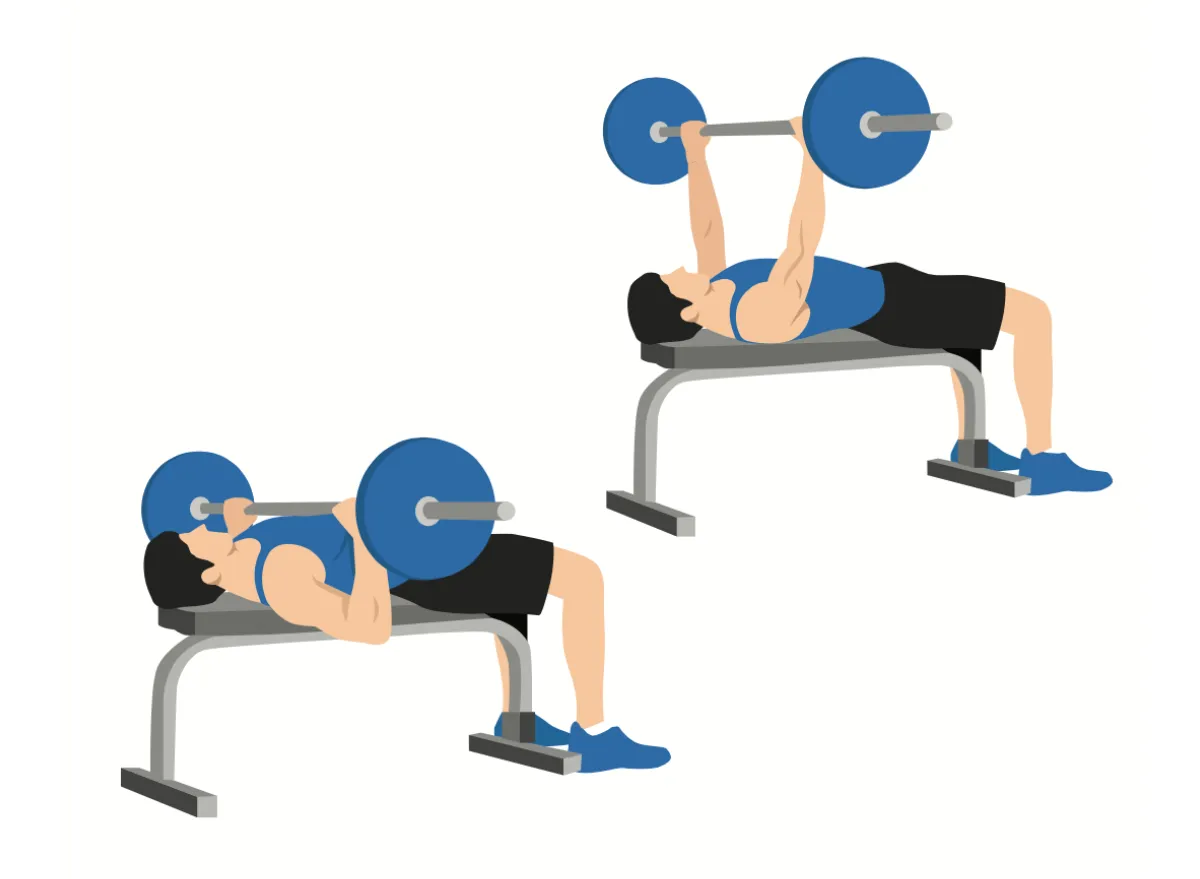
Lie on a flat bench with a barbell at chest height. Lower the bar to your chest, and push it back up. Complete three sets of 10 to 12 reps.
3. Bent-Over Rows
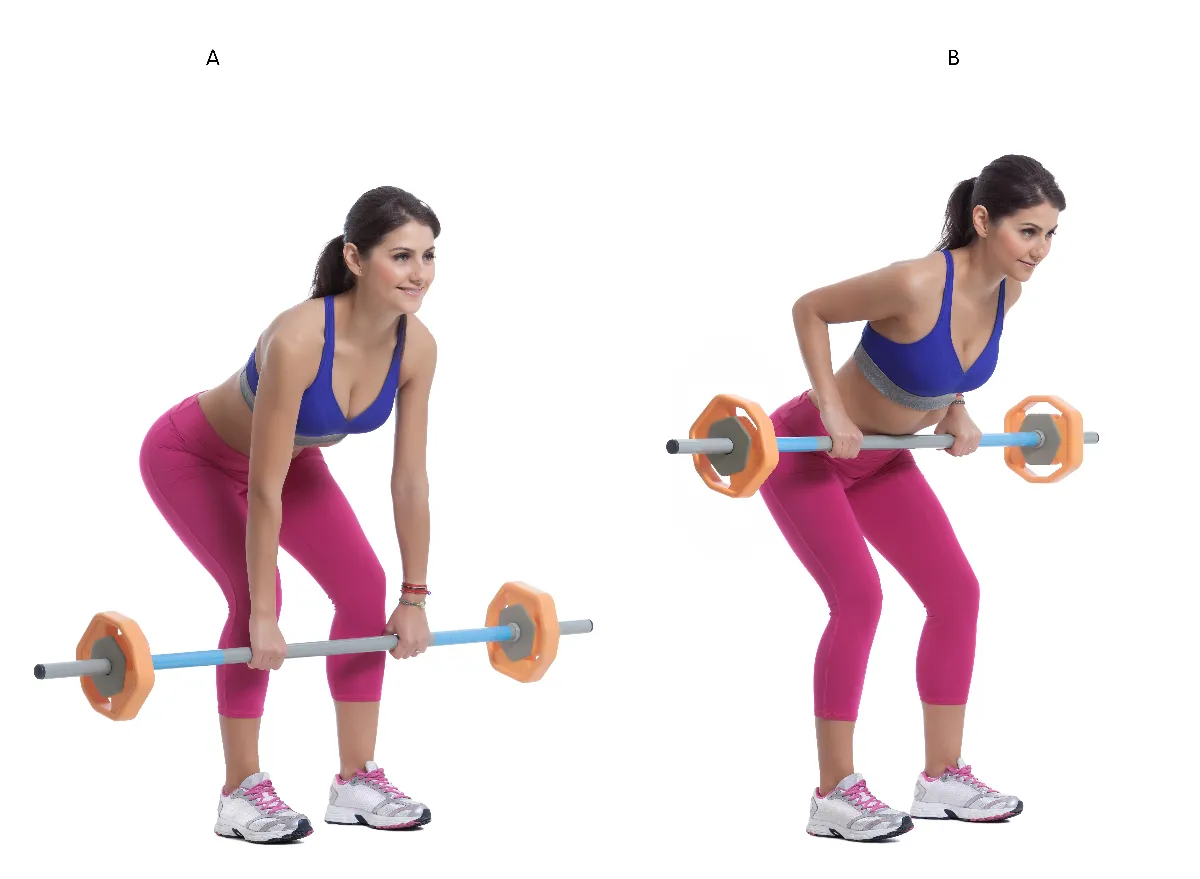

Hold a barbell with an overhand grip. Hinge at the hips, and pull the barbell to your chest. Aim for three sets of 12 to 15 reps.
Day 2: Cardiovascular Focus—High-Intensity Interval Training (HIIT)
High-intensity interval training (HIIT) contributes to fat loss by creating an afterburn effect known as excess post-exercise oxygen consumption (EPOC), where the body continues to burn calories post-workout, promoting a sustained calorie deficit. The intense bursts of activity during HIIT trigger the release of growth hormone, facilitating muscle growth and development. Additionally, HIIT stimulates the production of enzymes that enhance fat oxidation, making it an efficient and time-effective method for simultaneously burning fat and promoting muscle hypertrophy.
1. Sprint Intervals
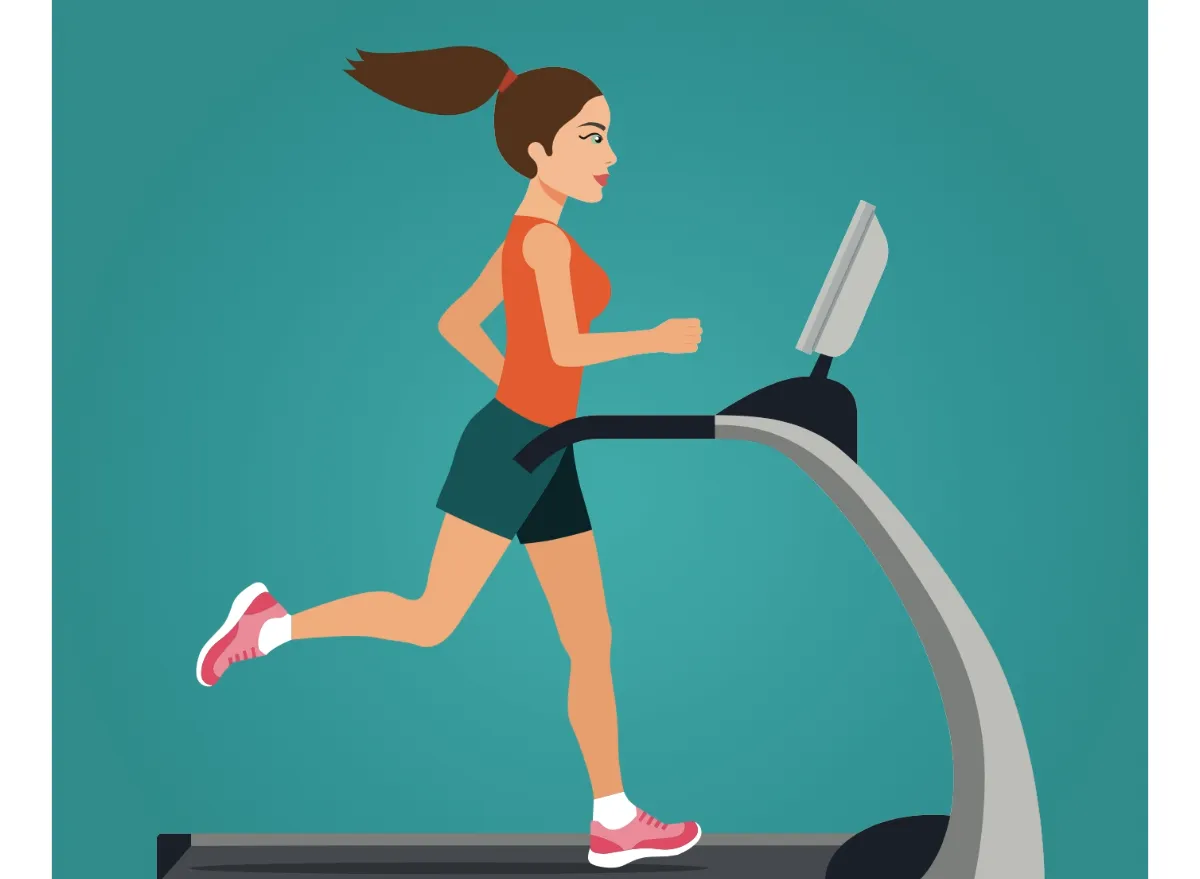

Sprint at maximum effort for 30 seconds. Follow with 30 seconds of rest or light jogging. Repeat for five minutes.
2. Burpees
Start in a standing position, then squat down and place your hands on the ground. Jump your feet back, landing in a plank position. Perform a pushup, then jump your feet back toward your hands. Explosively jump into the air, reaching overhead. Repeat for three sets of 10 to 15 reps.
3. Jump Squats
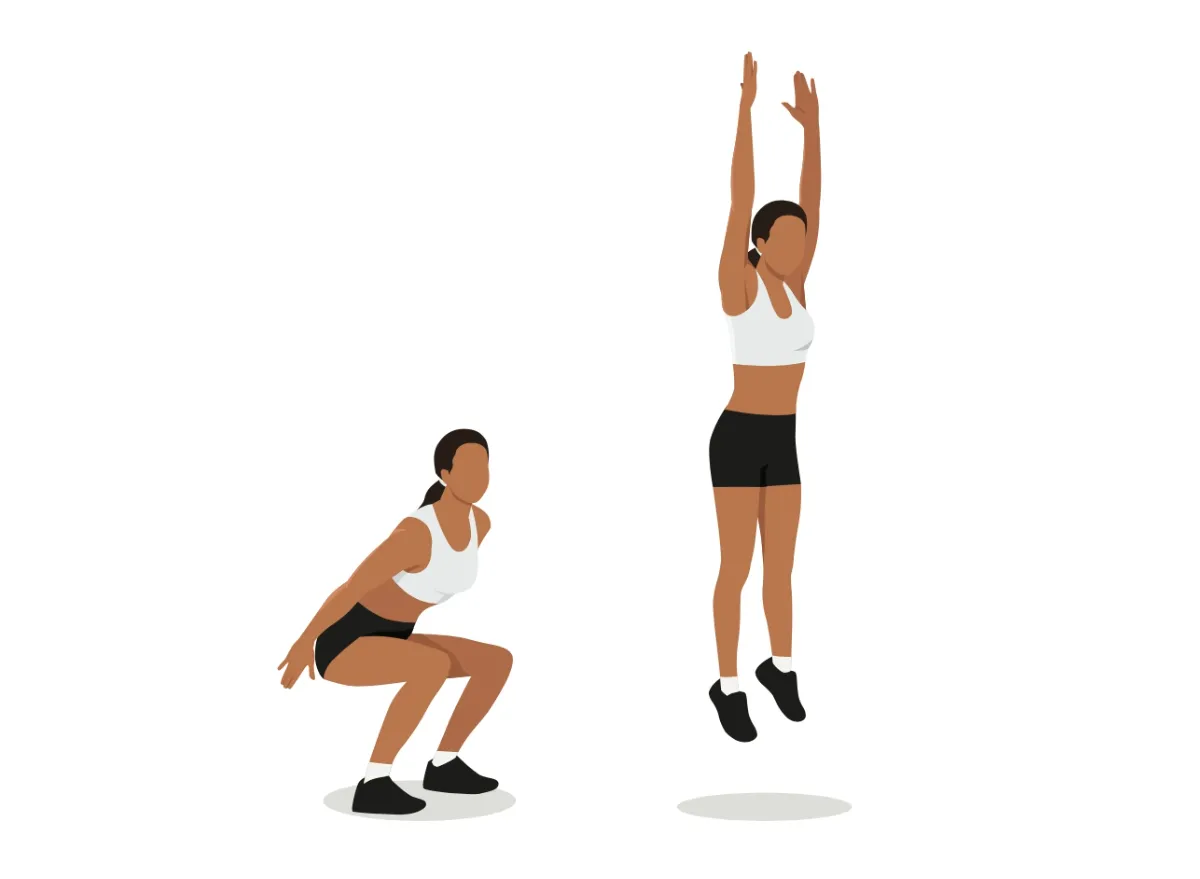

Stand with your feet shoulder-width apart. Lower your body into a squat position, keeping your back straight and your chest up. Explosively jump upward, extending your hips and knees. Perform three sets of 15 to 20 reps.
Day 3: Active Recovery
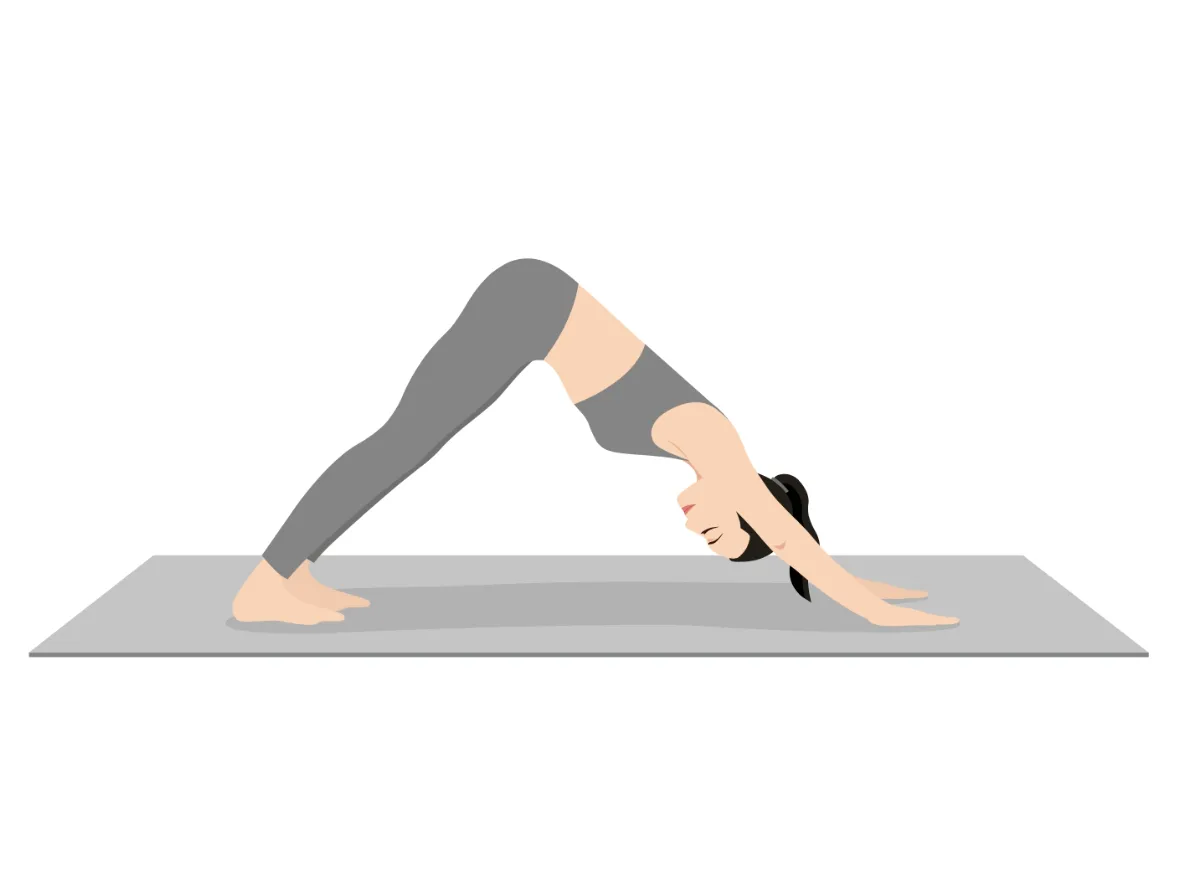

Recovery days are crucial when working out, as they allow for proper muscle repair and growth, preventing overtraining and reducing the risk of injuries. During recovery, the body replenishes energy stores and repairs micro-tears in muscle tissue caused by intense workouts, contributing to overall strength development. Adequate rest also balances hormone levels, promoting optimal metabolism and ensuring the sustainability of long-term fitness goals by preventing burnout and promoting mental well-being.
Engage in light activities such as walking, yoga, or swimming. Allow your body to recover while maintaining mobility by stretching. Drink plenty of water, get adequate sleep, and eat meals rich in nutrients and protein.
Day 4: Core and Stability Training
Core-strengthening exercises contribute to fat loss by engaging multiple muscle groups, increasing overall calorie expenditure, and promoting a higher metabolic rate. Additionally, a stronger core enhances stability and allows for more effective performance in compound movements, leading to increased muscle growth. As the core muscles develop and become more defined, they contribute to an aesthetically sculpted physique while supporting functional strength and improved posture.
1. Planks
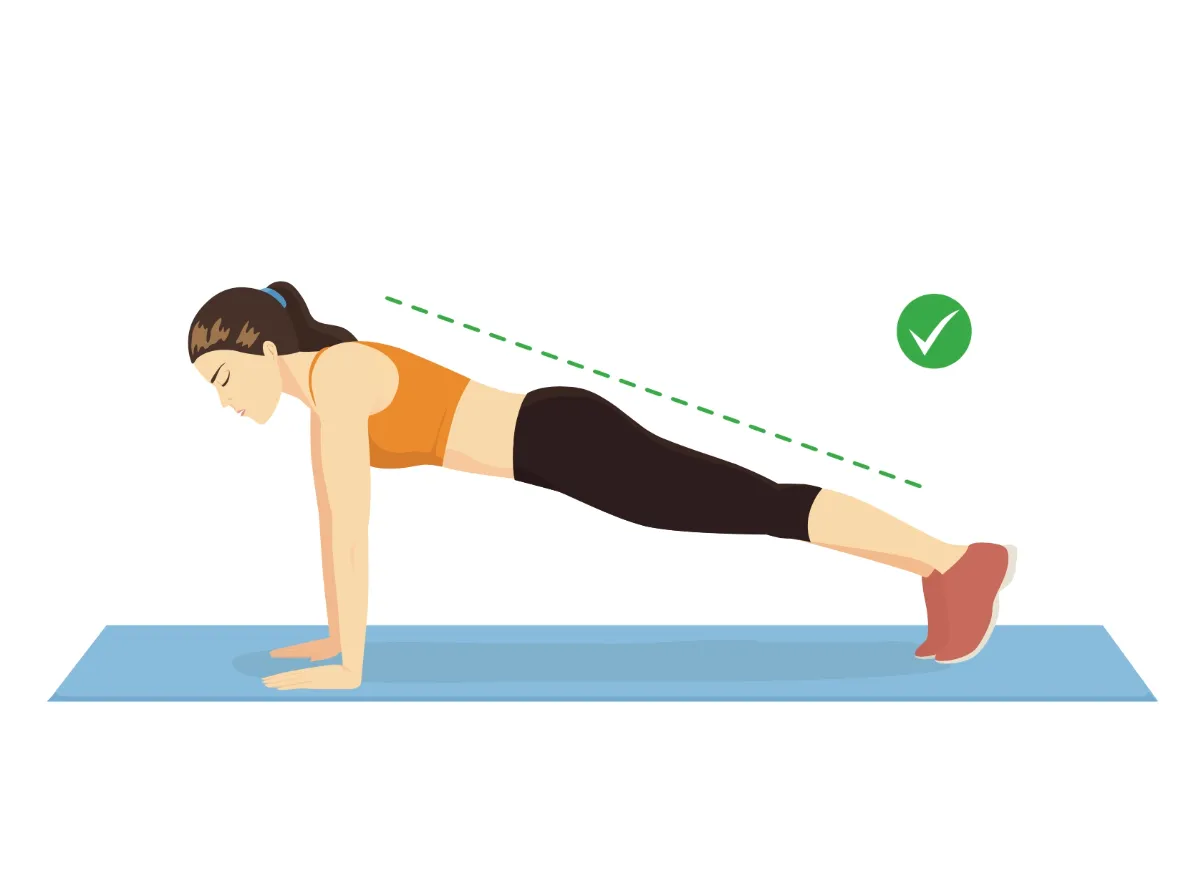

Hold a plank position with a straight line from your head to your heels. Aim for three sets, holding for 30 to 60 seconds.
2. Russian Twists
Sit on the floor, and lean back slightly. Rotate your torso while holding a weight or medicine ball. Perform three sets of 20 twists.
3. Bicycle Crunches
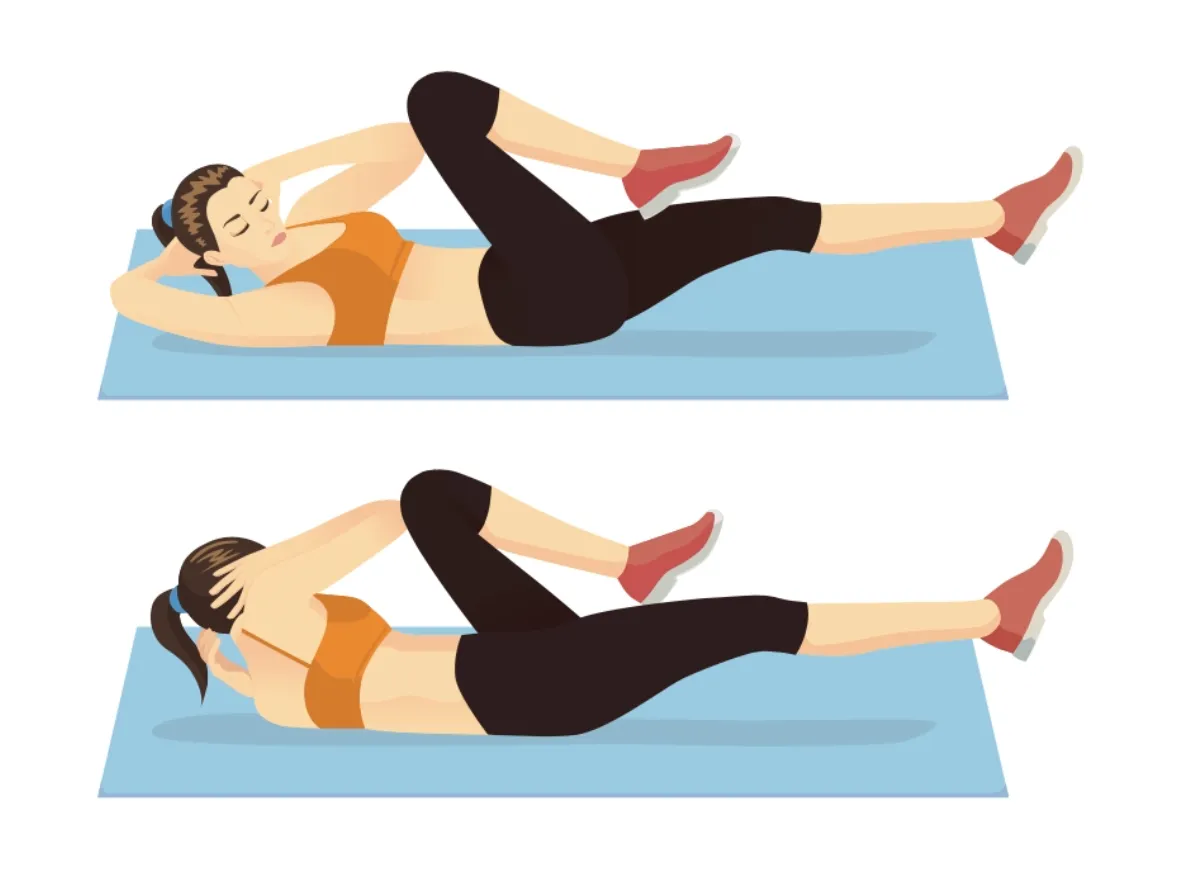

Lie flat on your back with your hands placed behind your head and elbows pointing outward. Lift your legs off the ground, and bend your knees at a 90-degree angle. Bring your right elbow toward your left knee while simultaneously straightening your right leg. Continue alternating sides in a pedaling motion. Aim for three sets of 15 to 20 reps.
Day 5: Cardiovascular Endurance—Long-Duration Cardio
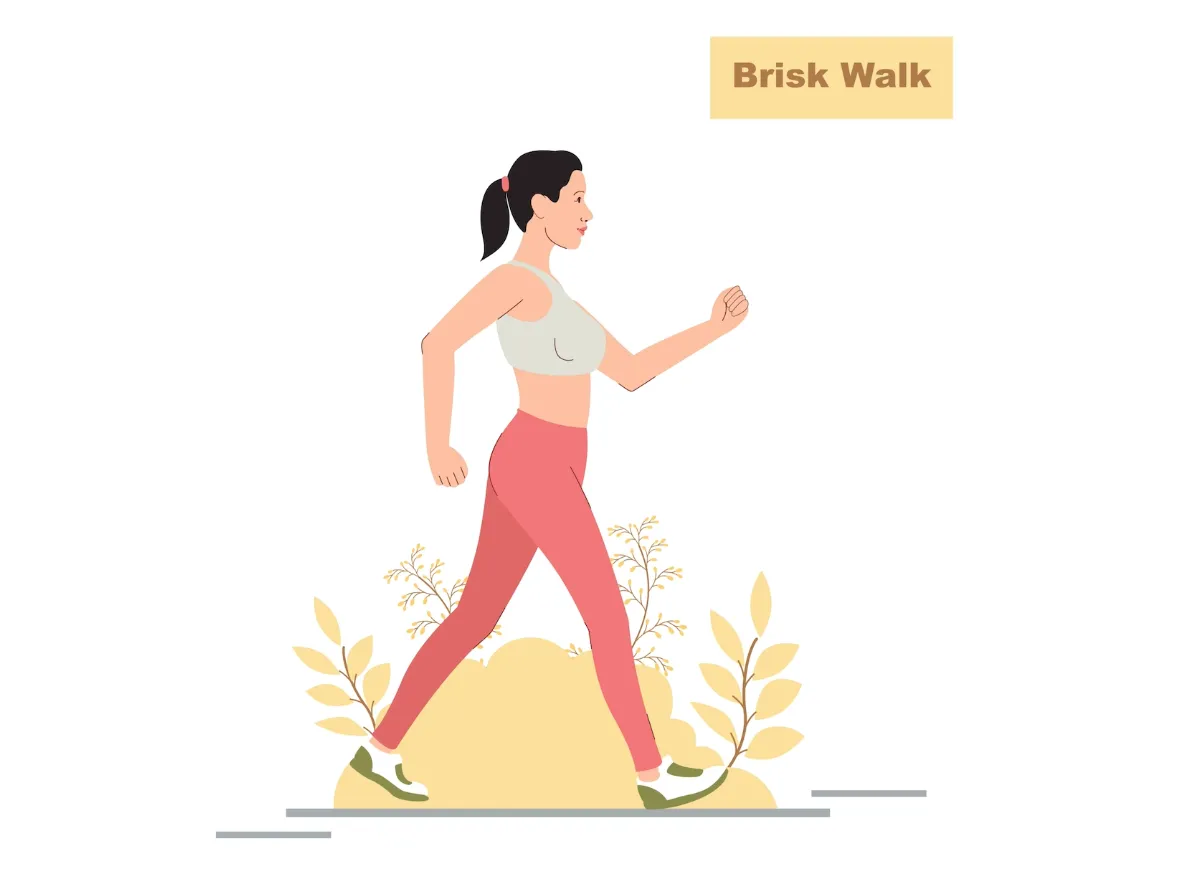

Long-duration cardio contributes to fat loss by promoting a sustained calorie burn, creating a calorie deficit essential for weight reduction. Additionally, it enhances cardiovascular endurance, enabling the body to efficiently utilize stored fat for energy during extended aerobic activities. While not directly promoting muscle growth like resistance training, consistent long-duration cardio supports overall health, aiding in a well-rounded fitness routine that complements muscle-building efforts.
Engage in moderate-intensity cardio for 45 to 60 minutes (jogging, brisk walking, cycling, or swimming).
Day 6: Compound Movements for Full-Body Engagement
Compound movements engage multiple muscle groups simultaneously, leading to a higher calorie expenditure during workouts. This increased energy demand supports fat loss by creating a calorie deficit. Additionally, compound movements stimulate the release of growth-promoting hormones, such as testosterone and growth hormone, fostering muscle growth and enhancing the overall metabolic rate for sustained fat loss.
1. Deadlifts
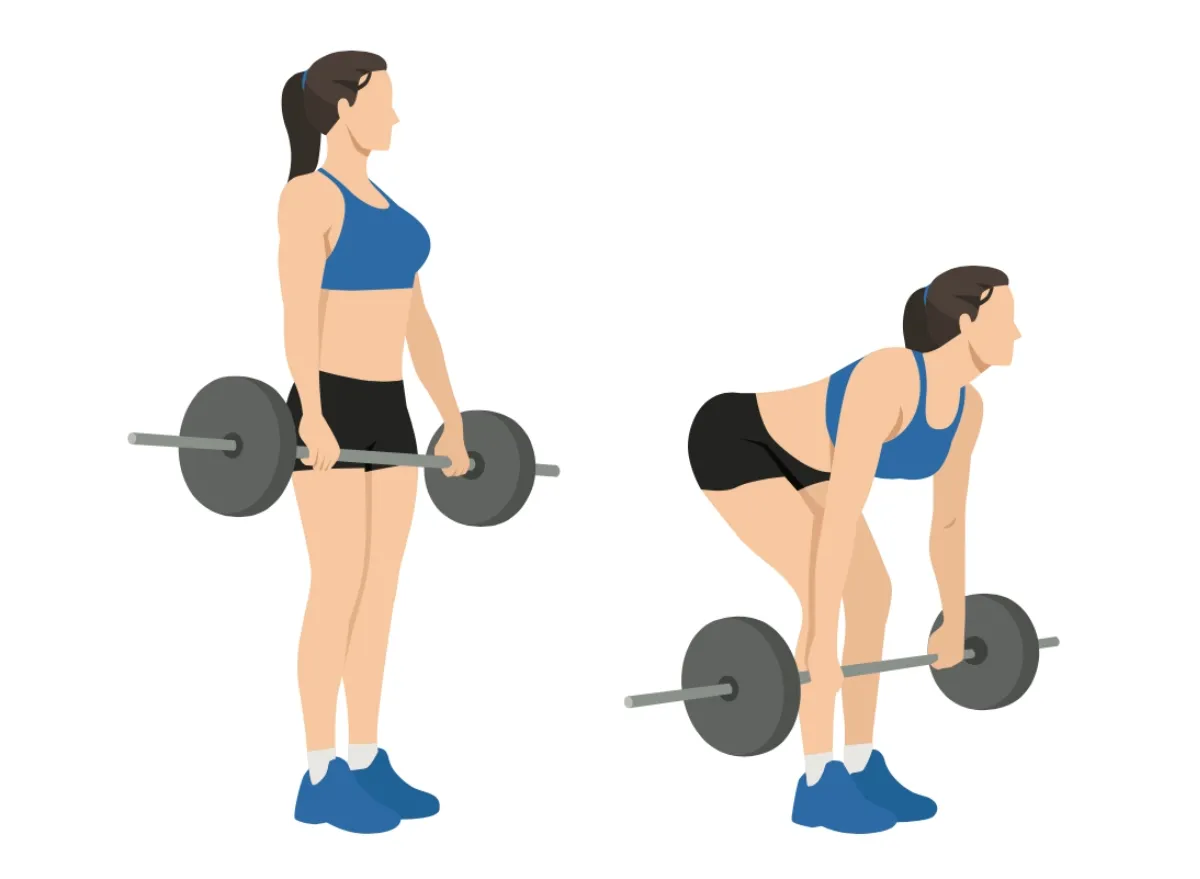

Lift a barbell from the ground using a hip hinge movement. Keep your lower back straight, and engage your core throughout the motion. Lower the barbell back to the ground. Complete three sets of 10 to 12 reps.
2. Overhead Press


Grip a barbell or dumbbell in each hand and hold at shoulder height. Lift the barbell or dumbbells straight overhead, fully extending the arms. Aim for three sets of 12 to 15 reps.
3. Kettlebell Swings
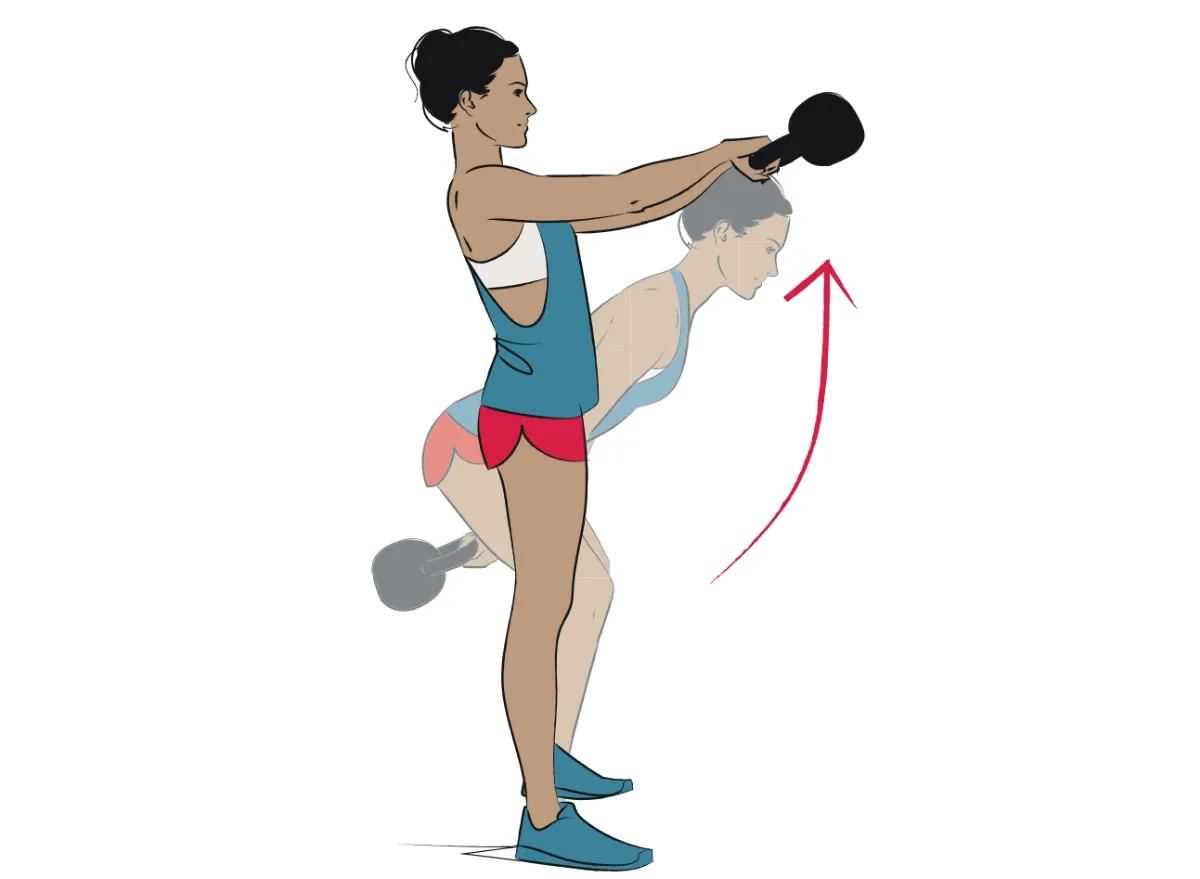

Stand with your feet shoulder-width apart, holding a kettlebell with both hands in front of you. Hinge at the hips, keeping a slight bend in the knees, and swing the kettlebell back between your legs. Explosively thrust your hips forward, swinging the kettlebell to chest height. Allow the kettlebell to swing back down, and repeat for three sets of 15 to 20 reps.
Day 7: Rest and Recovery
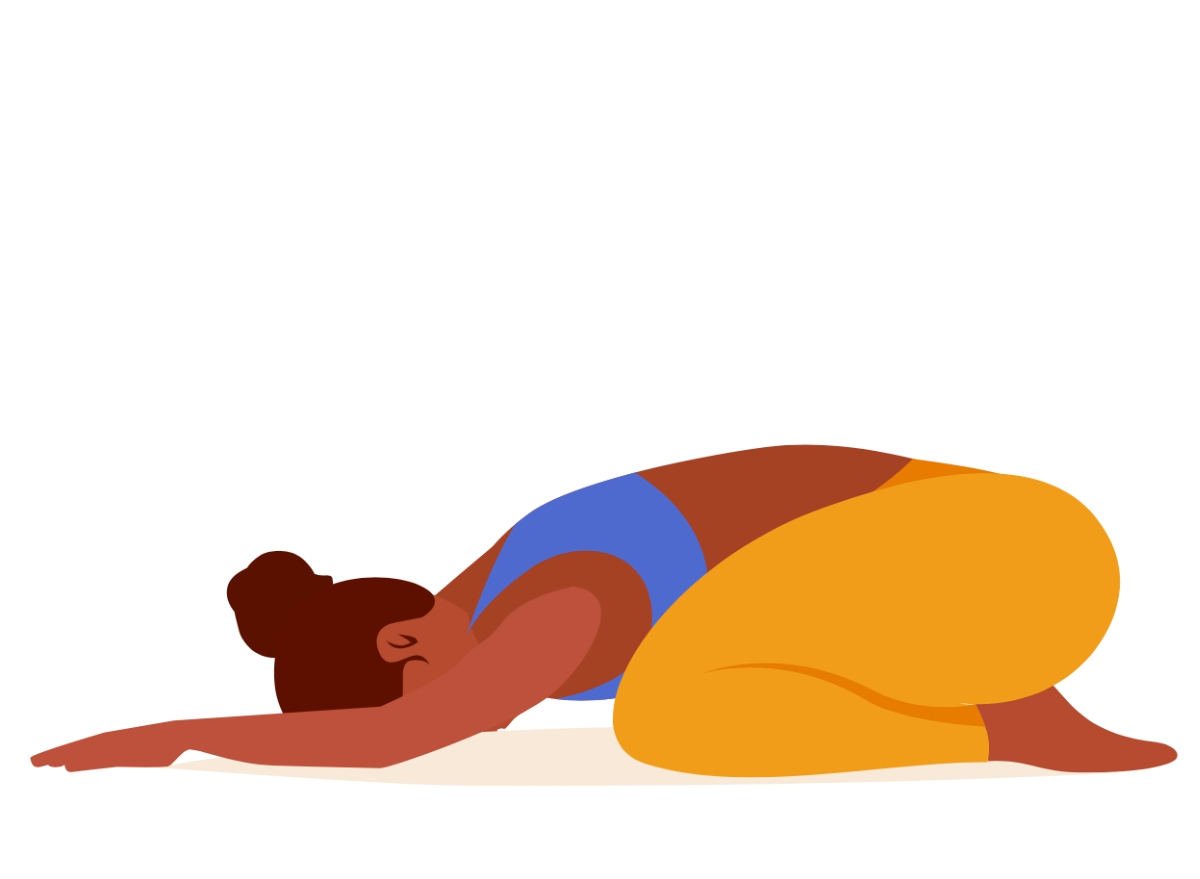

This weekly workout to lose weight and build muscle wraps up with another rest and recovery day. Feel free to engage in light activities like yoga, walking, or swimming. Give your body the time it needs (and deserves!) to recover while preserving mobility through light stretching.

Fitness
From Lifespan to ‘Health-span’: Use the New Year to Focus on Both Health and Fitness

Fitness encompasses cardiovascular endurance, strength training, and mobility/flexibility. These are non-negotiables for continuing to live throughout your later years with your independence and ability to move and socialize still intact.
Instead of thinking simply about living longer, let’s use the start of a new year to focus on getting healthier, so we live better. More than any other time each year, the New Year is a popular time to focus on a “fresh start.” Temporal landmarks like New Year’s Day, Mondays, birthdays and the change of seasons are standard starting lines for many of us when we have a goal to work toward and bad habits to break.
Science Says Fitness Matters (Even More than Weight)
A recent study published in the British Journal of Medicine, Cardiorespiratory Fitness, BMI, and Mortality: A Systematic Review and Meta-Analysis, shows that, regardless of body weight (obese, overweight or normal), fitness matters more for all-cause mortality. They measured the weight, BMI and fitness of six groups: normal weight-fit; normal weight-unfit; overweight-fit; overweight-unfit; obese-fit; and obese-unfit.
The analyses revealed that individuals classified as fit, regardless of their BMI, did not have a statistically significantly higher risk of cardiovascular disease or all-cause mortality compared to normal weight-fit people. At the same time, all unfit groups across different BMI categories exhibited a two- to threefold higher risk of cardiovascular disease and all-cause mortality compared to their regular weight-fit counterparts.
About Body Mass Index (BMI)
Now, you may be saying, “But BMI is flawed!” Sure. BMI is not the best indicator for distinguishing normal weight, overweight and obesity because it is simply a height-to-weight ratio that does not account for differences in body fat/muscle composition, age, sex or other factors. Before you discredit this entire study because of the BMI issue, remember that it measured fitness levels among people of different sizes. Some had more muscle and were considered fit in the overweight/obese group, while others were deemed unfit in the normal weight group. Still, BMI helps place people of differing sizes (height and weight groups) and focuses on measuring each group’s fitness. In the end, fitness matters more than BMI, so the goal is to exercise, get in shape, build muscle and lose fat.
Set Your Training Goals to Be Long-Term
It is fine to have short-term, specific training goals, such as strength gains and endurance times, or weight gain or weight loss. However, start this year with a 10-year fitness focus, as what you do in your 40s-50s will determine how you live in your 60s-70s. Always think 10 years ahead, no matter what your age, because what you gain today and maintain tomorrow is needed to continue to live independently for a few more generations in your family’s lineage. You can focus on longevity and optimal performance for your fitness and health goals at the same time by maintaining a consistent activity level and healthful nutrition, sleep and recovery.
Try This Goal: Make Annual Physical and Blood Screening Appointments
If you have not been to a doctor in a while, set an appointment in January, and get into the habit of annual health and wellness screenings. Treat annual physicals with the doctor as opportunities to PR (personal record) common blood work results, such as cholesterol, triglycerides, blood sugar, body weight and blood pressure. These are just the basics to help you assess how to adjust your sleep, nutrition, physical activity and stress management. These meetings are also quite satisfying when you achieve solid results that show health and wellness.
Don’t Give Up
While a large portion of us (nearly half of Americans) will create a New Year’s resolution, only about 9%-10% will achieve their goals. After a stressful holiday season, we are typically burned out in January. This may not be the best time to start a lifestyle change, complete with quitting bad habits (over-eating, smoking, drinking) and starting new healthy habits (gym membership, diet, etc.).
Instead, use the first few weeks of January to focus on stress mitigation and recovery. This should include building easy habits of walking every day, stretching, taking deep breaths and simply not overeating. This is a great way to move into a new fitness focus. Then, when feeling back to normal, focus a little harder, with more intensity, duration of training, and specificity to your fitness and health goals.
There are many ways to expand your “health-span.” Check out these options and get consistent with any or all of them:
Final Advice
If you want to get started on a focused health and wellness goal of being able to do physical activities, stay social and be independent, start with the basics of walking and stretching daily for a month. The following month, add calisthenics such as squats, lunges, push-ups and the plank pose. The following month, add weights such as dumbbells or kettlebells, or suspension trainers such as the TRX.
This steady progression helps you ease into fitness habits gently and adds a new component each month to keep it interesting. To achieve results with lifelong wellness goals, you need to keep endurance, strength and mobility/flexibility as primary focuses. Stability, durability, balance, speed and agility can also be developed once you have built the foundation. This is the beauty of long-term goals. Focus on doing something each day, being disciplined about eating and drinking healthfully, and learning stress-mitigation techniques such as breathing to take into your next decade on this planet.
There are dozens of these types of articles at the Military.com Fitness Section. Check them out for ideas on specific ways to train.
Want to Learn More About Military Life?
Whether you’re thinking of joining the military, looking for fitness and basic training tips, or keeping up with military life and benefits, Military.com has you covered. Subscribe to Military.com to have military news, updates and resources delivered directly to your inbox.
Story Continues
Fitness
Exercise ‘snacks’ can keep your fitness on track when time is tight – try these 3 today

December is great for many things – socialising, scoffing, falling out with relatives – but sticking to a training schedule is not one of them.
Heading out the door on Christmas morning for a two-hour long run is likely to put anyone on the naughty list, while it takes a dedicated runner indeed to spend part of the festive period running loops of the track.
What the mere mortal needs is exercise “snacks”. These can be enjoyed/endured alongside the carb-based variety and snuck in to even the busiest Christmas schedule.
A review in Sports Medicine and Health Research confirmed that regular, short bursts of physical activity throughout the day improved cardiovascular respiratory fitness, increased fat oxidation and polished off blood sugar levels after eating.
Vigorous intermittent exercises, such as sprints, were good for building muscle strength. Meanwhile, 10-minute resistance training sessions were found to be particularly beneficial to older people. The researchers concluded that exercise snacks could be a viable alternative to longer, less frequent sessions.
Cram in vigorous bouts of stair climbing for muscle strength, or one or two sub-10 minute morsels for muscle growth as an efficient alternative to meatier long sessions. Here’s some inspo below…
3 exercise snacks to gorge on
Try these simple workouts for results on the quick
For upper-body
Press-ups: 3 x 20 with a 30-sec rest between (b/w) reps
Bench dips: 3 x 15 with a 30-sec rest b/w reps
For lower-body
Bodyweight squats: 3 x 20 with 20-sec rest b/w reps
Wall sit: 2 x 90 secs with 1-min rest b/w reps
For cardio fitness
Burpees: 3 x 20 with 30-sec rest b/w reps
Skipping: 4mins consisting of 1min normal, 1min high knees, 1min normal, 1min high knees
Fitness
Study shows the antioxidants in this tea improve exercise recovery

I love many different herbal teas just as much as I enjoy a good old-fashioned British cup of PG tips, Earl Grey, or Glengettie — a Welsh favorite from the rolling valleys where I was born. In an interesting study, researchers explored whether drinking green or matcha tea can improve sports performance and exercise recovery, and the results might have you reaching for a vibrant green drink. If you want to get straight to the results, the short answer is that drinking green and matcha tea can support hydration, body fat control, and exercise recovery. Still, it definitely won’t be a game-changer when it comes to your performance in the gym, on the court, or on the field.
Hydrating with tea
In a study published in Nutrition and Food Technology, researchers reviewed existing studies of athletes and active adults that focused solely on drinking tea — no pills or extracts. They revealed that green or matcha tea can help hydrate the body when consumed in normal amounts. Tea counts toward your daily water intake.
Antioxidants and recovery

The research highlighted how the widely-studied antioxidants in green and matcha tea can improve exercise recovery and help protect your cells from the stress associated with intense exercise. That said, the research shows that drinking tea won’t lead to faster or better strength gains, so it’s no silver bullet for helping you achieve your fitness goals. However, they also concluded that low-caffeine green tea could even improve sleep quality, which I would argue could potentially help you power through that workout if you’re getting better sleep the night before.
Linked to lower body fat

Interestingly, the study authors also concluded that drinking around two or three cups of green or matcha tea per day was associated with slightly lower body fat and improved body composition and fat burning. While the effects weren’t overly significant, they were noted in the research. Cup of tea, anyone?
-

 Iowa1 week ago
Iowa1 week agoAddy Brown motivated to step up in Audi Crooks’ absence vs. UNI
-

 Maine1 week ago
Maine1 week agoElementary-aged student killed in school bus crash in southern Maine
-

 Maryland1 week ago
Maryland1 week agoFrigid temperatures to start the week in Maryland
-

 New Mexico1 week ago
New Mexico1 week agoFamily clarifies why they believe missing New Mexico man is dead
-

 South Dakota1 week ago
South Dakota1 week agoNature: Snow in South Dakota
-

 Detroit, MI1 week ago
Detroit, MI1 week ago‘Love being a pedo’: Metro Detroit doctor, attorney, therapist accused in web of child porn chats
-

 Health1 week ago
Health1 week ago‘Aggressive’ new flu variant sweeps globe as doctors warn of severe symptoms
-

 Maine1 week ago
Maine1 week agoFamily in Maine host food pantry for deer | Hand Off

























